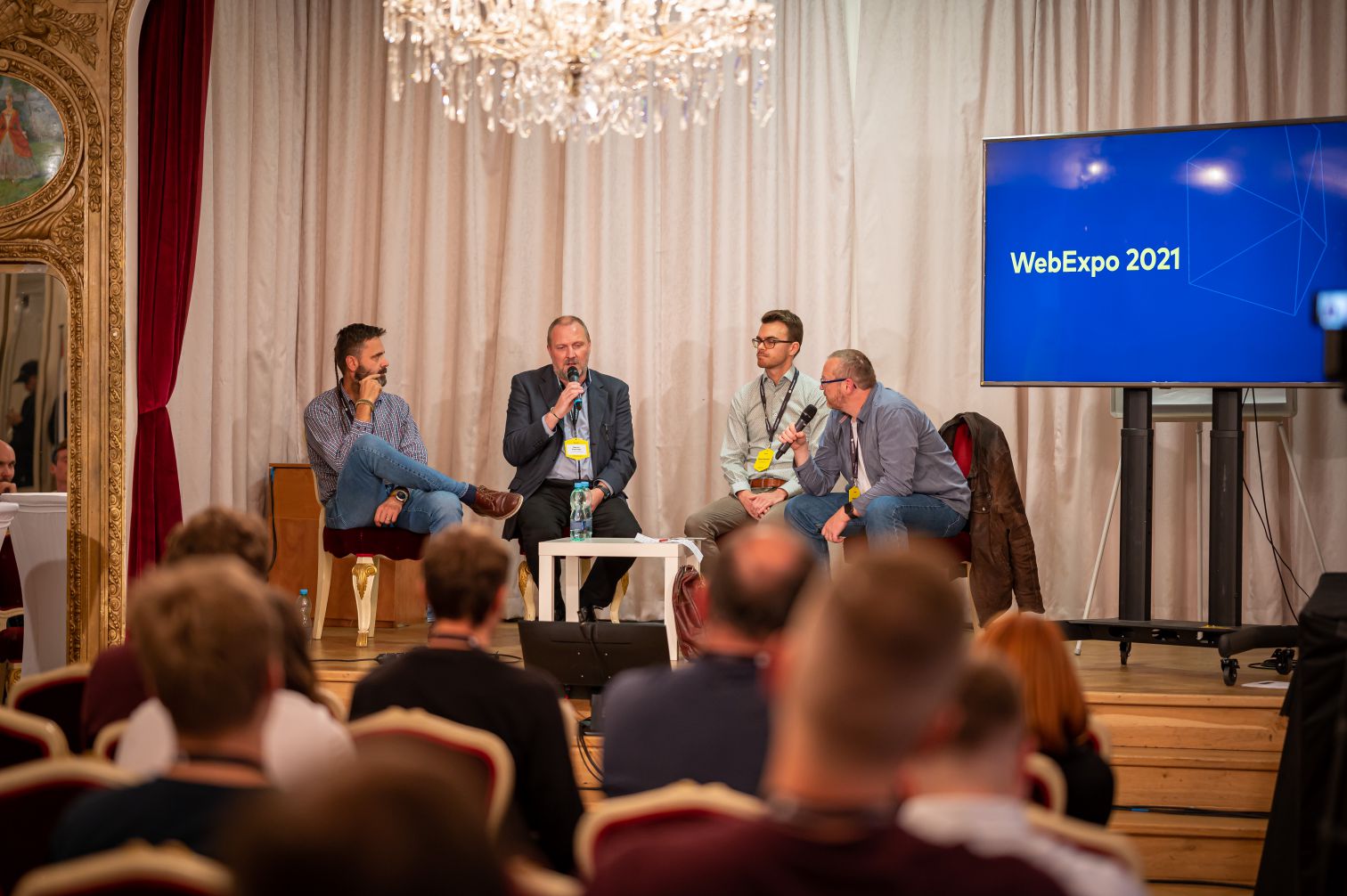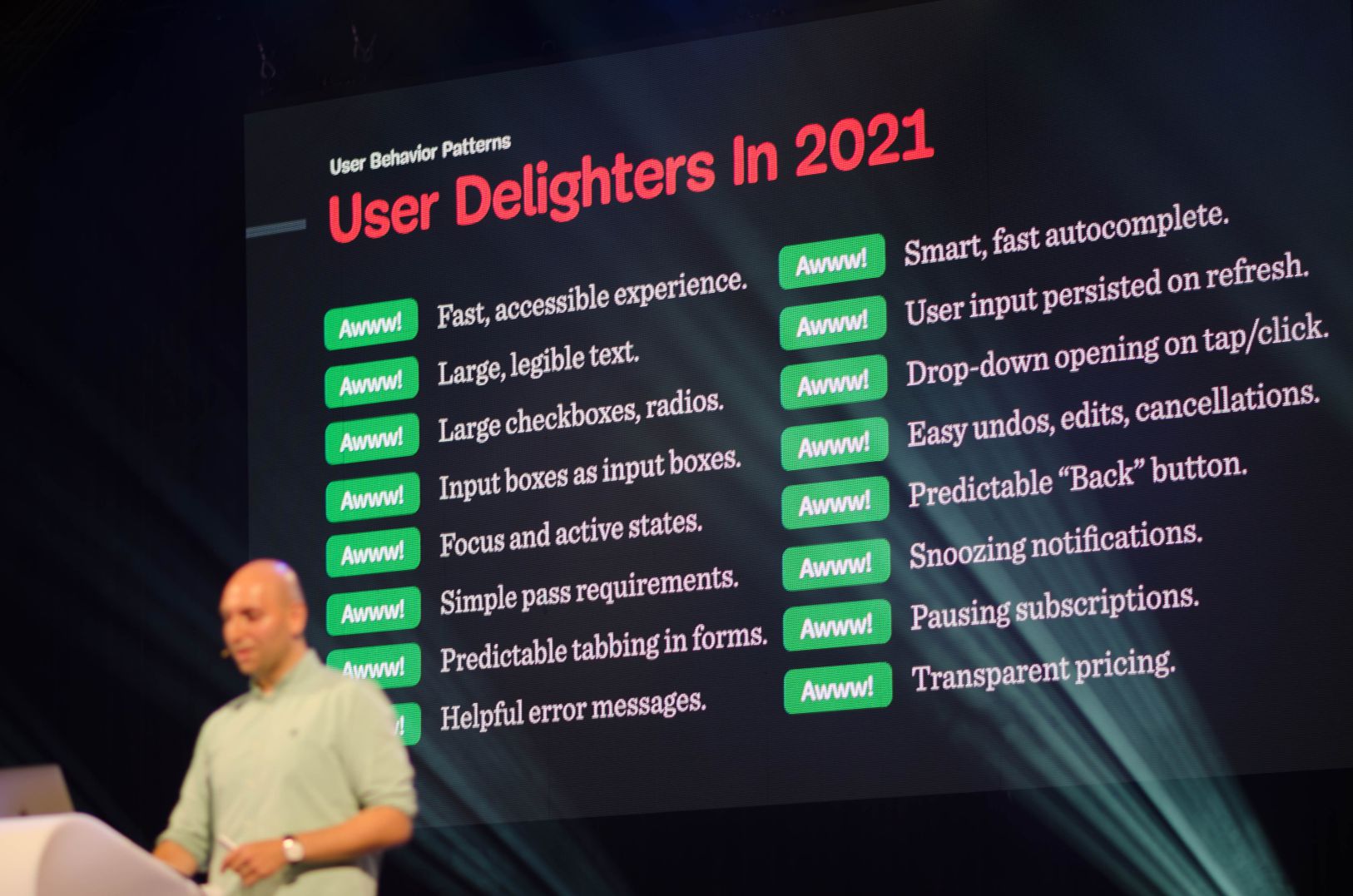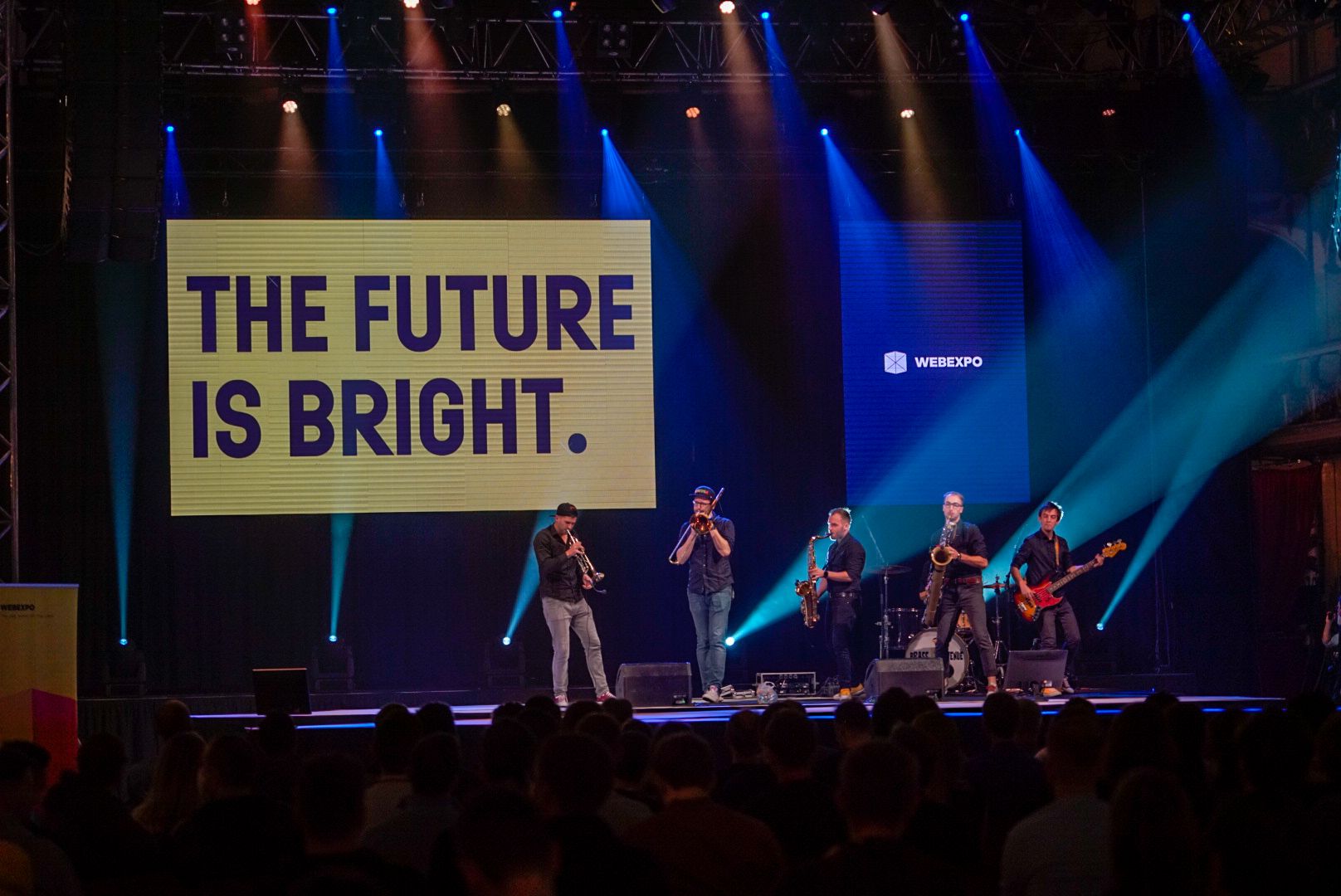The first major technological event after the pandemic. What was WebExpo 2021 like?
After last year’s forced coronavirus break, the largest event for the technological community in Central Europe returned to Prague’s Lucerna after two years. The WebExpo conference took place from 21 to 23 September and, despite the uncertainty associated with the development of the pandemic, managed to offer visitors a busy program with 92 speakers, mentors and discussion leaders from the Czech Republic and abroad over three days. It revealed the haunting potential of deep-fake videos, the environmental impact of web surfing, marketing for a pornography portal, or how a single person has been developing a tool used in billions of devices for 25 years, not only on Earth but also on Mars.
The entire WebExpo conference took place in hybrid mode. Visitors could therefore take part in live lectures, discussions and workshops directly in the five architecturally interesting halls of the Lucerna Palace or virtually through the Eventee service. Guests also performed hybrid at the event – most of them appeared physically on stage, but virtual lectures were not uncommon either. This was the case of speakers, especially from Australia, the USA and Asia, from whom it was difficult – and sometimes even impossible – to come to the Czech Republic.
Charged three days program It consisted of lectures, discussions and workshops, and really everyone found theirs there, from developers to designers, researchers, marketing specialists to managers. The organizers really tried to have all the areas closely related to the web and business on it represented. A number of global technology leaders were represented at the conference, such as Microsoft or Google, but even more visible was the show of successful startups, both foreign and domestic. There were also startup unicorns Pipedrive or Outreach. He was even presented at the conference by six speakers.
Contents
With new technologies comes a great responsibility
The conference was kicked out by Vitaly Friedman, an expert in UX design and co-founder of the online portal Smashing Magazine for designers, who moderated lectures in the large hall of Lucerna. Before the whole hall was full, he entertained the already settled visitors by throwing sweets at them. Subsequently, the director of WebExpo, Šárka Štrossová, gave an introductory speech together with Petr Burian, CTO of the Czech company Livesport, which is Platinum’s partner of the conference.
This was followed by a lecture by one of the biggest guests of the whole conference, which certainly did not disappoint the visitors, even though it was virtual. VFX artist from Belgium Chris Umé introduced the audience to the secrets of deep-fake videos, which repeatedly conquered the internet with viral hits with the fake Tom Cruise, the English Queen Elizabeth or Glum singing the songs Sinead O’connor. In his talk, he talked not only about the technological possibilities of creating hyper-realistic deep-fake videos, the possibilities of which shift practically every day, but also about the ethical side of their creation. We already have a problem not falling into the trap of fake-news, what are we going to do about fake politicians barely recognizable from the real ones? The students left the lecture partly dazzled by the possibilities of today’s technology, partly frightened by how people can use technology. So far, fortunately, we are limited mainly to viral videos and the film industry.

Internet versus environment. Even surfing the web has consequences
During the first day, Markéta Beníšek from the Footprint Digital agency, among others, also attracted the attention of domestic speakers. She introduced her audience to the issue of the digital carbon footprint. Internet users also generate carbon dioxide – purely by visiting a website. On average, one web load will generate 3 grams of CO2.
However, it was not only criticism, but the lecturer also offered the audience specific recommendations for developers on how to make their website more environmentally friendly. Less complicated websites, multimedia compression, less data to transfer, eliminating unused blocks of code, and simply reducing unnecessarily large fonts can help reduce environmental impact. And it also has a nice side effect – significantly faster web loading.

Nostalgia for the beginnings of the Czech Internet and the future of Czech eGovernment
One of the themes that permeated the conference was this year’s 30th birthday of the world’s first website. Due to the fact that thanks to its virtuality, this year’s WebExpo was a bit more “Czech” than usual, the organizers took advantage of the situation and prepared a block of two lectures with Czech experts from the public sector on the past and future of the Internet in the Czech Republic.
Jiří Peterka, a member of the board of the Czech Telecommunications Office, and Jan Gruntorád, a former director of the CESNET association, who connected the Czech Republic to the Internet almost 30 years ago, first appeared on the podium. Together they told the story of the arrival of the Internet in the Czech Republic or how the website had to gain its place in the limelight in competition with other services. A relatively large part of the conference visitors were not even in the world at this time, so the view of the two witnesses was authentic for them
The trip to the past was immediately followed by a discussion, this time looking to the future. It was led by Michal Bláha from the State Guard project and Roman Vrba from the eGovernment department of the Ministry of the Interior, Přemysl Sezemský from the electronic justice department from the Ministry of Justice and Martin Podveský, Solution IT Architect from the General Directorate of Customs. Together, the guests talked about the projects that are being prepared in their offices and together they tried to identify the biggest obstacle to better and faster development of eGovernment. According to them, it is mostly the Public Procurement Act that binds their hands too much in projects.

Next year in June
In addition to numerous lectures, this year’s WebExpo program has traditionally been accompanied by many other activities. Workshops, mentoring classes, stands of companies addressing job seekers, the Livesport partner program at Café Lucerna and a program for children who could try out robot control, print characters on a 3D printer or simply program with Leg. An interesting bead was also the discussions at the round table, which were streamed with a 360 ° camera. After the daily program, the participants were able to go networking again at the party.
Despite postponing last year’s conference, postponing the program and other restrictions due to the pandemic, we managed to organize a fairly normal 13th year of WebExpo, just spiced up with a little virtual. The organizers are already thinking about the next year, which will take place next year in the classic pre-holiday period – June 10-12, 2022.



